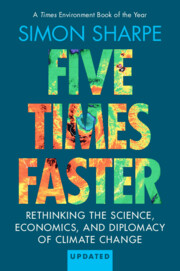 Five Times Faster
Five Times Faster Select Bibliography
Published online by Cambridge University Press: 24 October 2024
- Type
- Chapter
- Information
- Five Times FasterRethinking the Science, Economics, and Diplomacy of Climate Change – Updated Edition, pp. 412 - 429Publisher: Cambridge University PressPrint publication year: 2024
